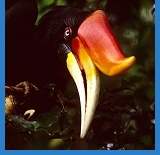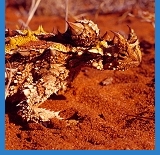




Related bibliographies:
Reptiles
 Lizards Lizards
 Diplodactylidae Diplodactylidae
Pacific Ocean






































































































































































































































































































































| |

Bibliography of the genus
Woodworthia (New Zealand Brown Geckos)

(Reptilia: Sauria: Diplodactylidae)
Note:
In order to limit redundancy, relevant literature indexed in the related bibliographies in the left column may not have been included in this page. For a comprehensive search of literature, these bibliographies should therefore also be consulted.
Woodworthia in general
 |
Gaby, M.J.; Besson, A.A.; Bezzina, C.N.; Caldwell, A.J.; Cosgrove, S.; Cree, A.; Haresnape, S.; Hare, K.M. 2011. Thermal dependence of locomotor performance in two cool-temperate lizards. Journal of Comparative Physiology A Sensory Neural and Behavioral Physiology 197(9): 869-875.
Garman, S. 1901. Some reptiles and batrachians from Australasia. Bulletin of the Museum of Comparative Zoology at Harvard 39: 1-14.
Gibson, S.; Penniket, S.; Cree, A. 2015. Are viviparous lizards from cool climates ever exclusively nocturnal? Evidence for extensive basking in a New Zealand gecko. Biological Journal of the Linnean Society 115(4): 882-895.
Jarvie, S.; Monks, J.M. 2014. Step on it: can footprints from tracking tunnels be used to identify lizard species. New Zealand Journal of Zoology 41(3): 210-217.
Penniket, S.; Cree, A. 2015. Adherence to Bergmann's rule by lizards may depend on thermoregulatory mode: support from a nocturnal gecko. Oecologia (Berlin) 178(2): 427-440.
Vermunt, A.; Hare, K.M.; Besson, A.A. 2014. Unusual change in activity pattern at cool temperature in a reptile (Sphenodon punctatus). Journal of Thermal Biology 42: 40-45.
|
Woodworthia chrysosiretica
 |
Hare, K.M. 2007. Natural history notes: Hoplodactylus chrysosireticus (Goldstripe Gecko). Body temperature. Herpetological Review 38(4): 456-457.
Hare, K.M.; Pledger, S.; Thompson, M.B.; Miller, J.H.; Daugherty, C.H. 2010. Nocturnal lizards from a cool-temperate environment have high metabolic rates at low temperatures. Journal of Comparative Physiology B Biochemical Systemic and Environmental Physiology 180(8): 1173-1181.
Melgren, P. 2012. Observations from a goldstripe gecko, Woodworthia chrysosireticus, population in suburban New Plymouth. BioGecko 1: 34-37.
Robb, J. 1980. Three new species of gekkonid lizards, genera Hoplodactylus Fitzinger and Heteropholis Fischer, from New Zealand. National Museum of New Zealand Records 1(19): 305-310.
Wilkinson, W.D. 1981. The status of the taranaki gecko Hoplodactylus chrysosireticus in the New Zealand herpetofauna. Herpetofauna (Sydney) 13(1): 18-20.
|
Woodworthia maculata
 |
Alibardi, L.; Meyer-Rochow, V.B. 2017. Regeneration of adhesive tail pad scales in the New Zealand gecko (Hoplodactylus maculatus) (Reptilia; Squamata; Lacertilia) can serve as an experimental model to analyze setal formation in lizards generally. Zoological Research 38(4): 191-197
Anastasiadis, J.M.; Whitaker, A.H. 1987. Longevity of free-living Hoplodactylus maculatus (Reptilia: Gekkonidae). New Zealand Journal of Ecology 10: 141-142.
Baling, M. 2015. Natural history notes: Woodworthia maculata (Common Gecko). Leucism. Herpetological Review 46(1): 97-98.
Bannock, C.A.; Whitaker, A.H.; Hickling, G.J. 1999. Extreme longevity of the common gecko (Hoplodactylus maculatus) on Motunau Island, Canterbury, New Zealand. New Zealand Journal of Ecology 23(1): 101-103.
Barwick, R.E. 1982. The growth and ecology of the gecko Hoplodactylus duvauceli at The Brothers Islands. Occasional Publication New Zealand Department of Internal Affairs Wildlife Services 2: 377-398.
Bauer, A.M.; Russell, A.P. 1988. Morphology of gekkonid cutaneous sensilla, with comments on function and phylogeny in the Carphodactylini (Reptilia: Gekkonidae). Canadian Journal of Zoology 66(7): 1583-1588.
Bell, T.; Bauer, A.M. 2017. Predation on a free-ranging Raukawa gecko (Woodworthia maculata) by a purple rock crab (Leptograpsus variegatus). BioGecko 4: ?.
Besson, A.A.; Thierry, A.; Boros, E.; Allen, K.; Bradley, S.; Norrie, C.; Cree, A. 2009. Evidence of food chemical discrimination in tuatara (O. Rhynchocephalia): comparison with a gekkotan lizard (O. Squamata). Journal of Herpetology 43(1): 124-131.
Cree, A. 1994. Low annual reproductive output in female reptiles from New Zealand. New Zealand Journal of Zoology 21(4): 351-372.
Cree, A.; Guillette, L.J. 1995. Biennial reproduction with a fourteen-month pregnancy in the gecko Hoplodactylus maculatus from southern New Zealand. Journal of Herpetology 29(2): 163-173.
Cree, A.; Hare, K.M. 2010. Equal thermal opportunity does not result in equal gestation length in a cool-climate skink and gecko. Herpetological Conservation and Biology 5(2): 271-282.
Eifler, D.A. 1995. Patterns of plant visitation by nectar-feeding lizards. Oecologia (Heidelberg) 101(2): 228-233.
Fitness, J.; Hitchmough, R.A.; Morgan-Richards, M. 2012. Little and large: body size and genetic clines in a New Zealand gecko (Woodworthia maculata) along a coastal transect. Ecology and Evolution 2(2): 273-285.
Freeman, A. 1993. Size differences between populations of Hoplodactylus maculatus in Canterbury, New Zealand. Herpetofauna (Sydney) 23(1): 9-15.
Gardner-Gee, R.; Beggs, J.R. 2010. Challenges in food-web restoration: an assessment of the restoration requirements of a Honeydew-Gecko trophic interaction in the Auckland region, New Zealand. Restoration Ecology 18 (Suppl. 2): 295-303.
Garman, S. 1901. Some reptiles and batrachians from Australasia. Bulletin of the Museum of Comparative Zoology at Harvard 39: 1-14.
Girling, J.E.; Cree, A.; Guillette, L.J. 1998. Oviducal structure in four species of gekkonid lizard differing in parity mode and eggshell structure. Reproduction Fertility and Development 10(2): 139-154.
Hare, K.M.; Hoare, J.M. 2005. Natural history notes: Hoplodactylus maculatus (Common Gecko). Aggregations. Herpetological Review 36(2): 179.
Hare, K.M.; Pledger, S.; Thompson, M.B.; Miller, J.H.; Daugherty, C.H. 2007. Low cost of locomotion in lizards that are active at low temperatures. Physiological and Biochemical Zoology 80(1): 46-58.
Hare, K.M.; Pledger, S.; Thompson, M.B.; Miller, J.H.; Daugherty, C.H. 2010. Nocturnal lizards from a cool-temperate environment have high metabolic rates at low temperatures. Journal of Comparative Physiology B Biochemical Systemic and Environmental Physiology 180(8): 1173-1181.
Hitchmough, R.A.; Neilson, K.A.; Goddard, K.; Goold, M.; Gartrell, B.; Cockburn, S.; Ling, N. 2012. Assessment of microbranding as an alternative marking technique for long-term identification of New Zealand lizards. New Zealand Journal of Ecology 36(2): 151-156.
Hoare, J.M.; Adams, L.K.; Bull, L.S.; Towns, D.R. 2007. Attempting to manage complex predator-prey interactions fails to avert imminent extinction of a threatened New Zealand skink population. Journal of Wildlife Management 71(5): 1576-1584.
Hoare, J.M.; Hare, K.M. 2006. Natural history notes: Hoplodactylus maculatus (Common Gecko). Toxin consumption. Herpetological Review 37(1): 86-87.
Hoare, J.M.; Nelson, N.J. 2006. Natural history notes: Hoplodactylus maculatus (Common Gecko). Social assistance. Herpetological Review 37(2): 222-223.
Kelly, C.D. 2015. Sexual size and shape dimorphism and allometric scaling patterns in head traits in the New Zealand Common Gecko Woodworthia maculatus. Zoology (Jena) 118(4): 248-254.
Lettink, M. 2007. Comparison of two techniques for capturing geckos in rocky habitat. Herpetological Review 38(4): 415-418.
Lettink, M. 2007. Detectability, movements and apparent lack of homing in Hoplodactylus maculatus (Reptilia: Diplodactylidae) following translocation. New Zealand Journal of Ecology 31(1): 111-116.
Lettink, M.; Cree, A. 2007. Relative use of three types of artificial retreats by terrestrial lizards in grazed coastal shrubland, New Zealand. Applied Herpetology 4(3): 227-243.
Lettink, M.; Whitaker, T. 2006. Natural history notes: Hoplodactylus maculatus (Common Gecko). Longevity. Herpetological Review 37(2): 223-224.
McCallum, J.; Hitchmough, R.A. 1982. Lizards of Rakitu (Arid) Island. Tane 28: 135-136.
Newman, D.G. 1994. Effects of a mouse, Mus musculus, eradication programme and habitat change on lizard populations of Mana Island, New Zealand, with special reference to McGregor's skink, Cyclodina macgregori. New Zealand Journal of Zoology 21(4): 443-456.
Powlesland, R.G. 1981. Ecology of Oruawairua Island, Marlborough Sounds, New Zealand. 4. The vertebrates. Mauri Ora 9: 53-58.
Rock, J. 2006. Delayed parturition: constraint or coping mechanism in a viviparous gekkonid? Journal of Zoology (London) 268(4): 355-360.
Rock, J.; Andrews, R.M.; Cree, A. 2000. Effects of reproductive condition, season, and site on selected temperatures of a viviparous gecko. Physiological and Biochemical Zoology 73(3): 344-355.
Rock, J.; Cree, A. 2003. Intraspecific variation in the effect of temperature on pregnancy in the viviparous gecko Hoplodactylus maculatus. Herpetologica 59(1): 8-22.
Rock, J.; Cree, A. 2008. Extreme variation in body temperature in a nocturnal thigmothermic lizard. Herpetological Journal 18(2): 69-76.
Rock, J.; Cree, A.; Andrews, R.M. 2002. The effect of reproductive condition on thermoregulation in a viviparous gecko from a cool climate. Journal of Thermal Biology 27(1): 17-27.
Spencer, N.J.; Grimmond, N.M. 1994. Influence of elevation on the thermoregulation of two sympatric lizards. New Zealand Journal of Zoology 21(4): 379-385.
Taylor, G.A. 1991. Flora and fauna of Plate (Montunau) Island, Bay of Plenty. Tane 33: 113-120.
Thierry, A.; Lettink, M.; Besson, A.A.; Cree, A. 2009. Thermal properties of artificial refuges and their implications for retreat-site selection in lizards. Applied Herpetology 6(4): 307-326.
Thompson, M.B.; Daugherty, C.H.; Cree, A.; French, D.C.; Gillingham, J.C.; Barwick, R.E. 1992. Status and longevity of the tuatara, Sphenodon guntheri, and Duvaucel's gecko, Hoplodactylus duvaucelii on North Brother Island, New Zealand. Journal of the Royal Society of New Zealand 22(2): 123-130.
Tocher, M.D. 1992. Paradoxical preferred body temperatures of two allopatric Hoplodactylus maculatus (Reptilia: Gekkonidae) populations from New Zealand. New Zealand Natural Sciences 19: 53-60.
Tocher, M.D. 1993. Critical minimum body temperatures of Hoplodactylus maculatus (Reptilia: Gekkonidae) from New Zealand. New Zealand Natural Sciences 20: 41-45.
Tocher, M.D.; Davison, W. 1996. Differential thermal acclimation of metabolic rate in two populations of the New Zealand common gecko Hoplodactylus maculatus (Reptilia: Gekkonidae). Journal of Experimental Zoology 275(1): 8-14.
Todd, A.C. 2005. The social mating system of Hoplodactylus maculatus. New Zealand Journal of Zoology 32(4): 251-262.
Towns, D.R.; Elliott, G.P. 1996. Effects of habitat structure on distribution and abundance of lizards at Pukerua Bay, Wellington, New Zealand. New Zealand Journal of Ecology 20(2): 191-206.
Walls, G.Y. 1983. Activity of the tuatara and its relationships to weather conditions on Stephens Island, Cook Strait, with observations on geckos and invertebrates. New Zealand Journal of Zoology 10(3): 309-317.
Werner, Y.L.; Whitaker, A.H. 1978. Observations and comments on the body temperatures of some New Zealand reptiles. New Zealand Journal of Zoology 5(2): 375-393.
Whitaker, A.H. 1982. Interim results from a study of Hoplodactylus maculatus (Boulenger) at Turakirae Head, Wellington. Occasional Publication New Zealand Department of Internal Affairs Wildlife Services 2: 363-376.
Wilson, D.J.; Mulvey, R.L.; Clark, R.D. 2007. Sampling skinks and geckos in artificial cover objects in a dry mixed grassland-shrubland with mammalian predator control. New Zealand Journal of Ecology 31(2): 169-185.
|
| | 









































































































































































|

